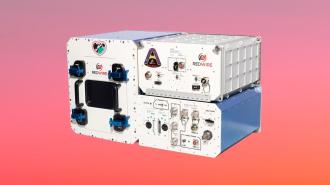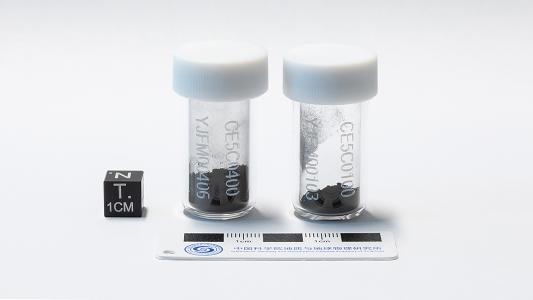An experiment that just reached the International Space Station (ISS) could help end the organ shortage — by revealing the benefits of 3D printing body parts in microgravity.
The challenge: 3D printers build things from the ground up by layering “ink” in precise patterns using a computer model. The ink is often some type of plastic, but it can be made from biological materials, too — such as human cells.
3D printing soft tissues in microgravity may prevent them from collapsing.
Using 3D printing, medical researchers can create implants, prosthetics, grafts, and more that are designed specifically for the person set to receive them — this personalization can improve the likelihood of the new body part seamlessly integrating with the patient’s own body.
The use of 3D printing in healthcare has largely been limited to bone, cartilage, and other harder tissues, though. Softer tissues, such as those in most of our organs, can collapse under their own weight during the printing process.
The idea: 3D printing soft tissues in the microgravity environment of space may overcome this problem.
In 2019, space biotech company Techshot sent a 3D printer called the BioFabrication Facility (BFF) to the ISS to test the viability of this idea. That device was used to print human heart cells and part of a human meniscus — a layer of cartilage that fits between the bones in the knee.
Now, space tech company Redwire Space, which acquired Techshot in 2021, is replacing the original BFF with an updated version. In addition to offering better temperature control, it also has new camera views that will help researchers controlling the machine from Earth.
“The strengthening, or curing, process is what allows us to create these nice 3D structures that hold their shape.”
Molly Mulligan
The updated BFF arrived at the ISS on November 9, and the “ink” (human cells and proteins) will arrive on a later flight.
Once it does, the BFF’s first assignment will be to print a whole human meniscus. After printing, the meniscus will be moved to Redwire’s Advanced Space Experiment Processor (ADSEP) on the ISS for curing, a process that can take 12 to 45 days.
“The strengthening, or curing, process is what allows us to create these nice 3D structures that hold their shape,” said Molly Mulligan, Redwire’s business development director for in-space manufacturing and operations.
“If you just brought back the print, it would collapse under Earth’s gravity,” she continued, “but once it’s cured, we can return it to Earth with no issue.”
The tissues created by the BFF on the ISS will later be compared to ones made on Earth to see whether microgravity produces a higher-quality product.
The ultimate goal: In addition to 3D printing a meniscus, the BFF may also be used to create mini models of human organs for testing new drugs and treatments, minimizing the need for (and limitations of) animal experiments.
Redwire’s ultimate goal, though, is to use what it learns from the BFF to 3D print entire human organs for transplantation into people as soon as possible — helping end the organ shortage that causes 17 deaths in the US every day.
We’d love to hear from you! If you have a comment about this article or if you have a tip for a future Freethink story, please email us at [email protected].






